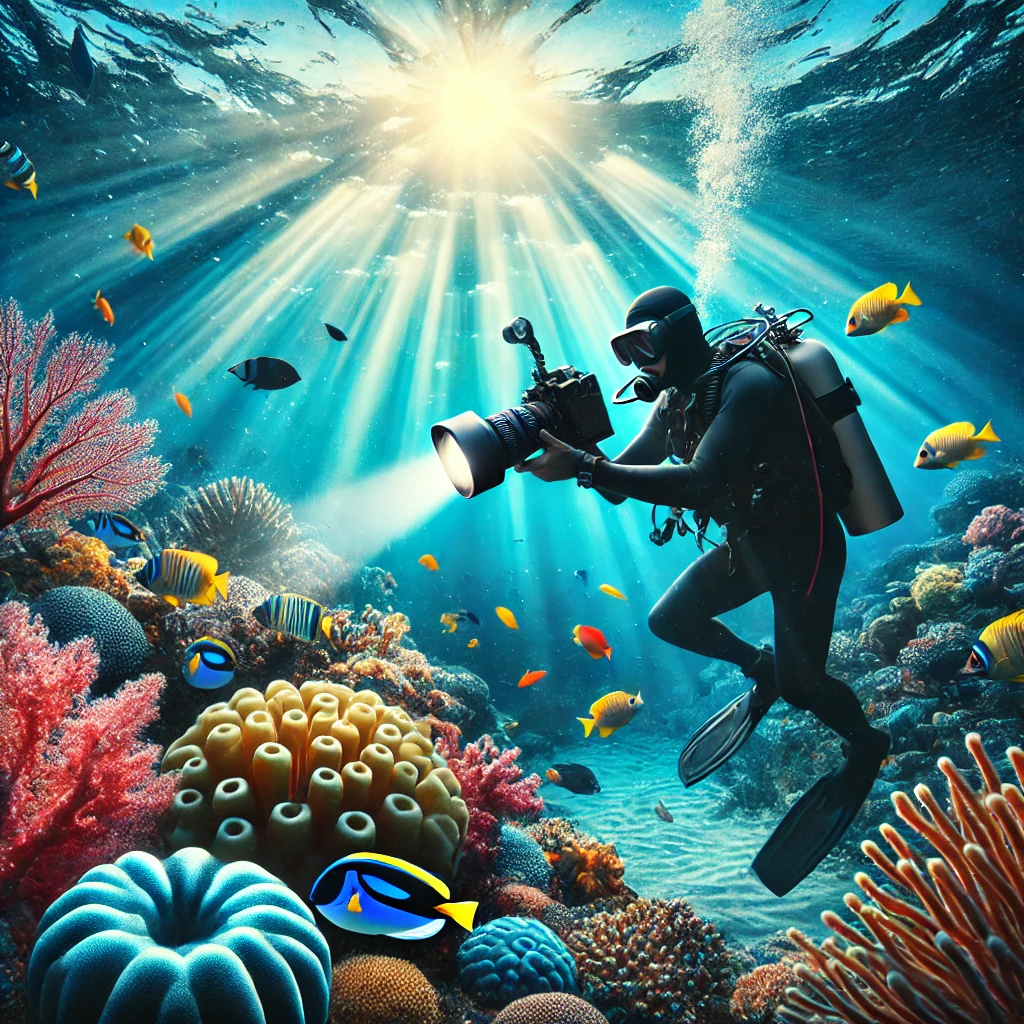Marine photography offers a captivating glimpse into the vibrant ecosystems beneath the ocean’s surface. The allure of capturing life beneath the ocean’s surface attracts both amateur and professional photographers alike. Each dive offers new surprises, with vibrant ecosystems teeming with life. There’s something enchanting about stepping into this underwater world – each click of the shutter bringing remarkable scenes to life.
Capturing these underwater scenes requires specialized equipment, techniques, and an understanding of marine environments. This comprehensive guide delves into the essentials of marine photography, providing insights into equipment selection, shooting techniques, and post-processing tips to help you capture stunning underwater images.
Understanding Marine Photography
Marine photography involves photographing subjects underwater, ranging from intricate coral formations to diverse marine life. The underwater environment presents unique challenges, including light absorption, color distortion, and buoyancy control. Mastering this art requires not only technical proficiency but also a deep appreciation for marine ecosystems.
Essential Equipment for Marine Photography
Technology forms the backbone of marine photography. Without the right equipment, venturing underwater with a camera would be nearly impossible. Waterproof housings, specialized lenses, and powerful lights transform simple cameras into sophisticated tools capable of capturing breathtaking marine images. The progress in camera technology has made it possible to capture ever more detailed and vivid photographs, preserving the beauty of marine life for everyone to see.
Selecting the right equipment is crucial for successful underwater photography. Here are some top-rated underwater photography cameras available on Amazon:
1. AKASO EK7000 4K Action Camera
Capture stunning adventures with the Akaso EK7000 4K Action Camera, delivering 4K Ultra HD video at 30FPS and 20MP photos for crystal-clear imagery. Its Electronic Image Stabilization (EIS) ensures smooth, steady footage, even during fast action shots. Designed for extreme conditions, this waterproof camera works up to 131 feet with its durable case—perfect for underwater photography. The wireless wrist remote offers hands-free control, while built-in Wi-Fi and HDMI enable quick sharing and editing via the AKASO GO app. Compact, versatile, and rugged, the EK7000 is ideal for capturing high-action moments anywhere, from mountain trails to ocean depths! 🌊📸
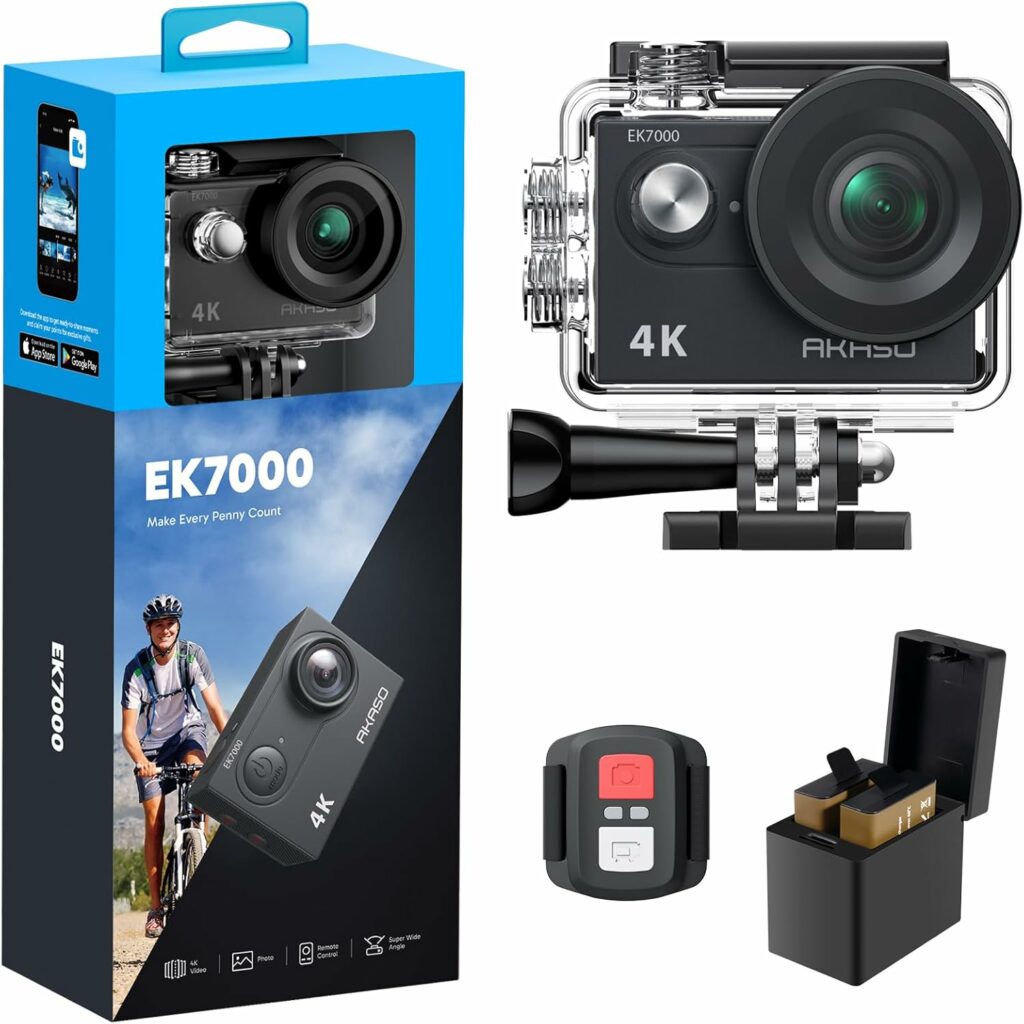
This budget-friendly action camera offers 4K video recording, 20MP photos, and comes with a waterproof case rated up to 131 feet, making it ideal for beginners venturing into underwater photography.
- Key Features: 4K video recording, 20MP photos, and waterproof up to 131 feet.
- Best For: Beginners venturing into underwater photography.
- Buy it here: AKASO EK7000 on Amazon
2. SeaLife DC2000 Underwater Camera
Capture the underwater world in stunning detail with the SeaLife Micro 3.0 Explorer Camera & Light Gift Set. This all-in-one, leak-proof, and permanently sealed camera delivers 16MP photos and 4K Ultra HD video with vibrant colors and sharp clarity. Paired with the Sea Dragon 2300F light, offering 2300 lumens and a 120° wide beam, it replicates natural daylight for flawless lighting. Designed for ease of use, it features simple controls, manual white balance, RAW format support, and Wi-Fi connectivity for instant sharing. Perfect for divers, this set is expandable, durable, and ideal for any underwater adventure! 🌊📸
Designed specifically for underwater use, the SeaLife DC2000 features a large image sensor for low-light performance and is depth-rated to 200 feet. It’s a solid choice for enthusiasts seeking higher image quality
- Key Features: Large image sensor for low-light performance and depth-rated to 200 feet.
- Best For: Enthusiasts seeking higher image quality.
- Buy it here: SeaLife DC2000 on Amazon
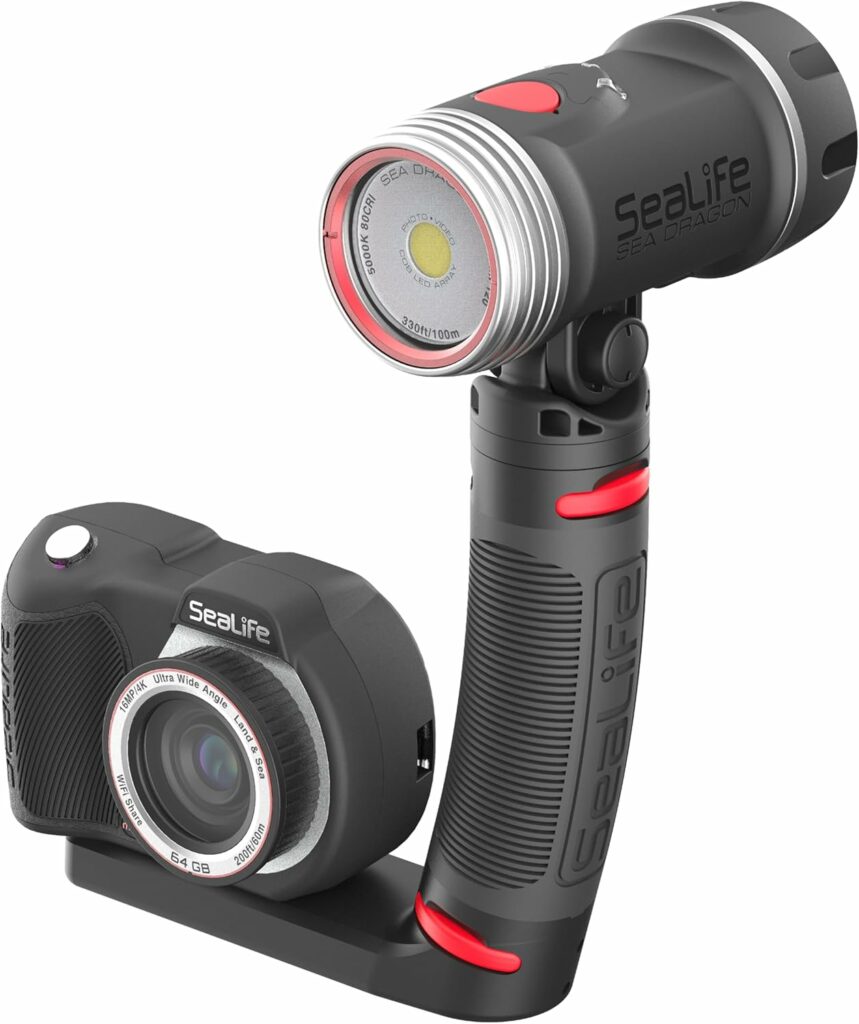
3. GoPro HERO11 Waterproof Action Camera
Capture every adventure with the HERO11 Black, GoPro’s most advanced action camera yet. Its revolutionary image sensor delivers stunning 5.3K video—91% more resolution than 4K—and 27MP photos. Enjoy cinematic detail, vibrant colors, and exceptional clarity. Waterproof and built for durability, it’s perfect for outdoor enthusiasts. Ideal for editing, zooming, and cropping without losing quality, the HERO11 also features a water-repelling lens cover to reduce flare and artifacts. With seamless versatility and peak performance, it’s the ultimate companion for adventure sports and marine photography. Elevate your creativity and preserve unforgettable moments with breathtaking sharpness and detail. 🌊📸
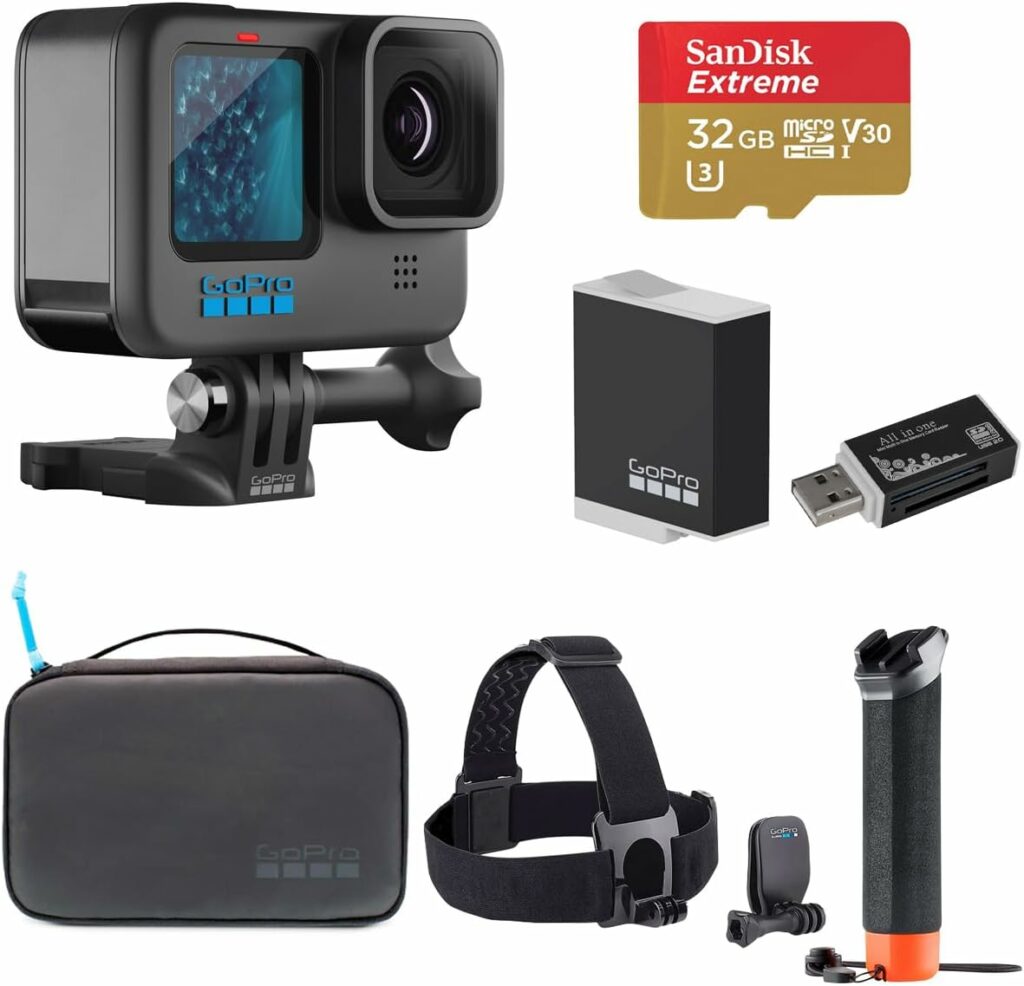
Known for its durability and image stabilization, the GoPro HERO11 is waterproof up to 33 feet without housing and offers high-resolution video and photo capabilities, suitable for various underwater adventures.
- Key Features: Waterproof up to 33 feet without housing, high-resolution video, and excellent image stabilization.
- Best For: Adventurers who need durability and versatility.
- Buy it here: GoPro HERO11 on Amazon
4. Canon EOS Rebel T7 DSLR Camera with Underwater Housing
Step up your photography with the Canon EOS Rebel T7—perfect for beginners and enthusiasts. Featuring a 24.1MP CMOS sensor and Dual Pixel CMOS AF, it delivers sharp, vibrant photos and FHD 1080p videos, even in low light. Built-in Wi-Fi and NFC make sharing seamless, while Scene Intelligent Auto Mode simplifies shooting for beginners. Its optical viewfinder offers 95% coverage, and the 9-point AF system ensures quick focus. Ideal for travel, adventures, and everyday moments, the Rebel T7 is versatile, reliable, and easy to use—perfect for capturing memories with clarity and style. 📸✨
For those seeking advanced control, pairing the Canon EOS Rebel T7 with an appropriate underwater housing provides excellent image quality and manual settings, catering to more experienced photographers.
- Key Features: Excellent image quality, manual settings, and compatibility with underwater housings.
- Best For: Experienced photographers seeking advanced control.
- Buy it here: Canon EOS Rebel T7 on Amazon
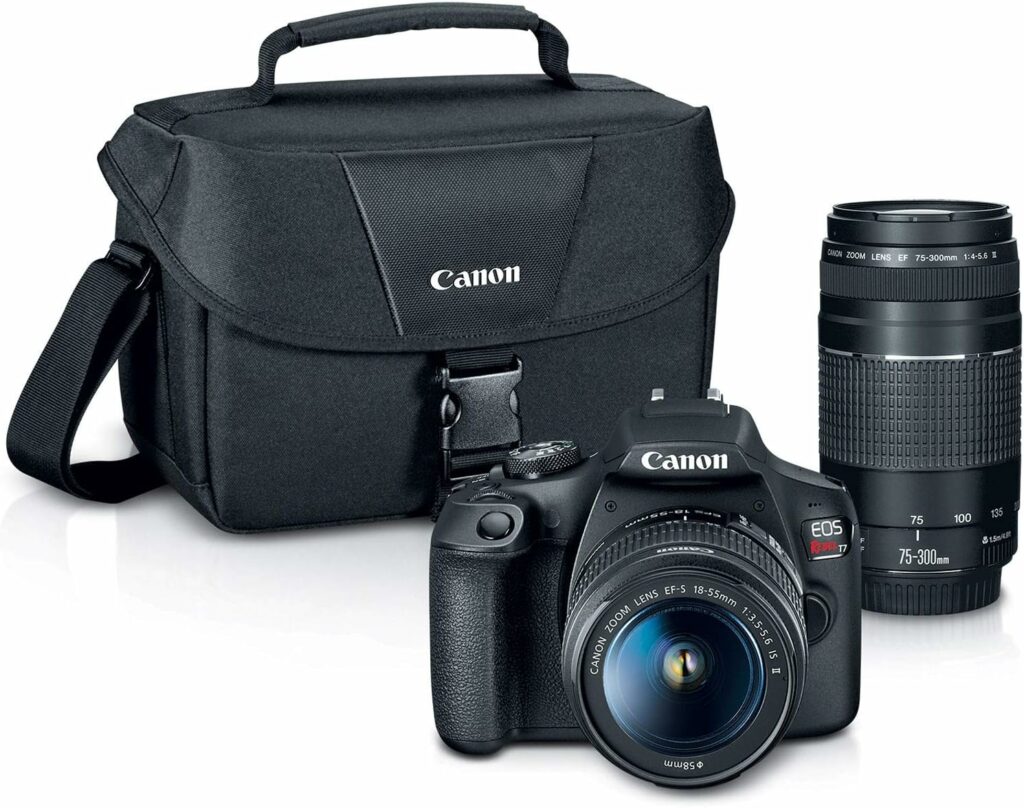
5. SeaLife Micro 3.0 Explorer Underwater Camera
Dive into underwater photography with the SeaLife Micro 3.0 Explorer Camera—a high-performance, permanently sealed, leak-proof camera delivering 16MP photos and 4K Ultra HD video. Its Sea Dragon 2300F light provides 2300 lumens with a wide 120° beam for natural lighting. Featuring manual white balance, RAW capture, and Wi-Fi connectivity, it’s perfect for editing and sharing photos effortlessly. Easy-to-use piano key controls make it dive-ready, even with gloves. The bundle includes a tray, grip, and long-lasting battery, making it ideal for adventurers seeking durability, simplicity, and vibrant underwater imagery. 🌊📸
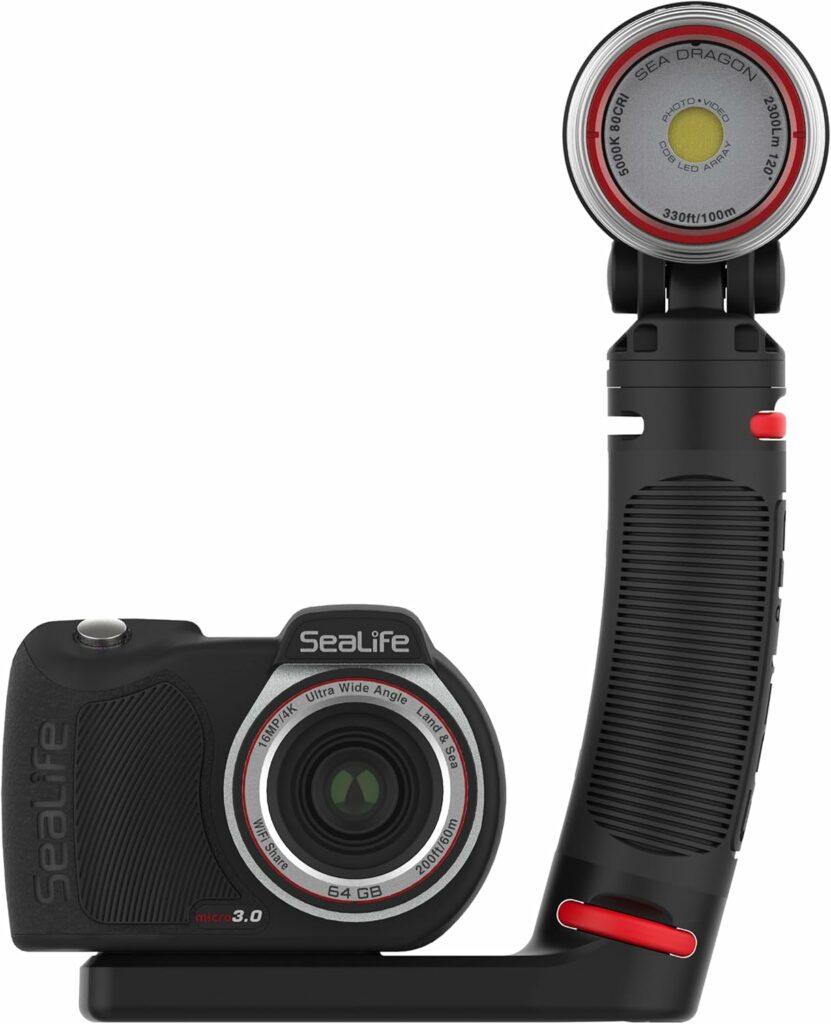
This compact, permanently sealed camera is waterproof up to 200 feet and offers easy-to-use controls, making it a great option for divers who want a hassle-free experience.
- Key Features: Permanently sealed, waterproof up to 200 feet, and simple controls.
- Best For: Divers looking for a hassle-free experience.
- Buy it here: SeaLife Micro 3.0 on Amazon
Accessories
Investing in high-quality underwater accessories is essential for capturing vibrant, sharp, and professional-grade images, even in the most challenging marine environments. Durable underwater housings protect your camera from water pressure, leaks, and potential damage, enabling you to shoot confidently at greater depths. Powerful strobes and external flashes compensate for light loss underwater, restoring rich colors and fine details that are often absorbed by water, especially at deeper levels.
For added flexibility, adjustable lighting arms and trays allow precise positioning of lights, reducing shadows and minimizing backscatter caused by particles in the water. Wide-angle lenses are perfect for capturing sweeping reefscapes and larger marine animals, while macro lenses highlight intricate patterns and features of small sea creatures like nudibranchs and shrimp.
To maintain crystal-clear shots, anti-fog inserts and lens cleaning kits prevent condensation inside housings and smudges on lenses. Additionally, color-correcting filters, such as red filters, restore natural tones at various depths, reducing the need for heavy editing. For extended shoots, carrying spare batteries and high-capacity memory cards ensures you never miss a moment due to power or storage limitations.
These essential accessories not only improve image quality but also make marine photography more versatile, efficient, and rewarding, allowing photographers to push creative boundaries while respecting the beauty and fragility of underwater ecosystems.
Techniques for Capturing Stunning Underwater Images
Light behaves differently underwater, altering colors and affecting visibility. Understanding these changes is crucial for capturing the true essence of marine life. Simple adjustments in positioning and the type of lighting can mean the difference between a dull image and a vibrant, lifelike representation. Light brings out the rich colors of corals and fish, turning a simple shot into a colorful explosion that resembles the reality of the scene.
Photographing underwater presents challenges, from maintaining buoyancy to dealing with the different habitats and behaviors of marine creatures. Each environment demands an understanding not only of photographic techniques but also of the ecosystem at hand. The patience and skill required to navigate these waters and get that perfect shot are what make marine photography so rewarding.
1. Get Close to Your Subject
Water reduces color, contrast, and sharpness. Approaching your subject within 12 inches minimizes these effects and enhances image clarity.
2. Maintain Neutral Buoyancy
Staying neutrally buoyant helps prevent disturbing marine life and reduces the risk of stirring up sediment, which can cloud your shots.
3. Use Proper Lighting
Natural light diminishes with depth, causing color loss. Utilize external strobes or underwater flash units to restore color and detail to your images.
4. Focus on Composition
Apply compositional rules such as the rule of thirds, leading lines, and framing to create visually appealing images. Incorporate elements like coral or schools of fish to add depth and interest.
5. Adjust White Balance
Manually setting the white balance compensates for color shifts underwater, ensuring accurate color representation in your photos.
Post-Processing Underwater Images
Editing plays a significant role in underwater photography. Software like Adobe Lightroom and Photoshop can correct color balance, enhance contrast, and remove backscatter (unwanted particles) from your images. Learning these post-processing techniques will greatly improve your underwater photography skills.
Tips for Better Underwater Photography
1. Practice in Pools First
Before venturing into open water, practice handling your equipment in a swimming pool. This controlled environment allows you to familiarize yourself with the camera and refine your techniques.
2. Shoot in RAW Format
RAW files capture more data than JPEGs, providing greater flexibility in post-processing to adjust colors and exposure.
3. Use Wide-Angle and Macro Lenses
Wide-angle lenses are great for capturing expansive reef scenes, while macro lenses help highlight intricate details of small marine life.
4. Time Your Shots
Early morning and late afternoon provide the best lighting conditions underwater. Midday sun can create harsh shadows, so timing is key.
5. Be Respectful of Marine Life
Avoid touching or disturbing marine animals and their habitats. Respect for the environment ensures its preservation for future photographers.
Ethical considerations play a big role when capturing images under the sea. Minimizing the impact on fragile ecosystems and marine inhabitants is crucial. It’s important to keep a respectful distance, avoid touching corals, and ensure that the pursuit of a perfect shot doesn’t come at the expense of the environment. Preserving these natural wonders is as important as capturing them, ensuring that the beauty of marine life can be enjoyed by future generations.
Frequently Asked Questions (FAQs)
1. How do I prevent backscatter in my underwater photos?
- Use external lighting positioned at an angle to reduce reflection.
- Avoid using the on-camera flash.
- Shoot in areas with clear water to minimize particles.
2. What settings should I use for underwater photography?
- Aperture: f/8 to f/16 for depth of field.
- Shutter Speed: 1/125s or faster.
- ISO: 100-400 to minimize noise.
3. How can I improve the sharpness of my underwater images?
- Stabilize the camera with trays and handles.
- Use spot focus for accuracy.
- Select faster shutter speeds to avoid motion blur.
4. What’s the best way to capture vibrant colors underwater?
- Shoot in shallow waters for better light.
- Use filters to restore colors at depth.
- Adjust white balance and saturation during editing.
5. Do I need scuba diving certification for underwater photography?
Certification isn’t necessary for snorkeling but highly recommended for scuba diving to ensure safety and better control underwater.
Conclusion
Marine photography offers a unique way to explore and document the beauty of underwater life. With the right equipment, techniques, and preparation, anyone can capture stunning images beneath the surface. Remember to practice, respect the marine environment, and continually improve your skills through experimentation and post-processing. Whether you’re a beginner or an experienced photographer, this guide provides the tools and tips needed to elevate your marine photography journey. Happy shooting! 🌊📸
#MarinePhotography #UnderwaterPhotography #CaptureLifeUnderwater #PhotographyTips #UnderwaterEquipment #PhotographyGear #OceanPhotography #UnderwaterEditing #MarineLifePhotos #UnderwaterTechniques

